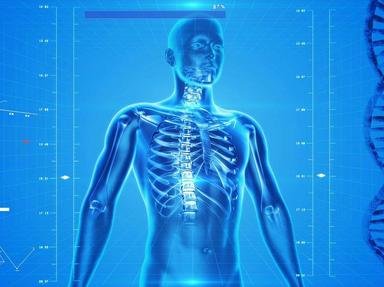Quiz Answer Key and Fun Facts
1. The amputation site must have time to heal before the fabrication of a prosthetic limb can begin. How much time is generally proscribed for the healing?
2. Which of these specialists will you work with to identify and implement a limb prosthesis?
3. There are basically two categories of upper limb prosthesis, dependent on which part of the limb is missing. Which of these pairs of prostheses would be for upper limb replacement?
4. One option is for a prosthetic limb to simply look life-like. These can be made from silicone or PVC and have life-like features such as veins, muscle and bone ridges, freckles, hair, fingerprints and even tattoos. What name is used to refer to these type of artificial limbs?
5. Body powered prostheses are the choice of many amputees. These are relatively low in cost, and mechanical rather than electronic. How are movements controlled?
6. In 1964, the Central Prosthetic Research Institute of the USSR developed myoelectric arms. These artificial limbs are powered by battery and receive signals electronically from the amputee's body. They can provide wrist rotation and opening and closing of fingers. Which of these is one of the "negative issues" with this type of prosthesis?
7. Jack Steele coined the term bionic in 1958. In the field of prosthetics it refers to a replacement that matches or exceeds the functionality of the original. Which of the following upper limb prostheses claims to be bionic?
8. Documented operations to transplant hands have been occurring since 1964. The operation is long and complicated as bone, tendon, artery, cartilage, muscle, fat and blood vessels are connected. What name is given to this procedure?
9. One recurring issue with amputees and prosthetic devices is the limited time span before replacement is needed, especially for the advanced options. Advanced options could be the covering, the electronics, or other mechanical options. When could you expect to have to replace an advanced prosthesis?
10. There are many different groups working on prosthetics, but one Iraq veteran felt that there must be a better solution. Which project did Marine reservist Jonathon Kuniholm start when he returned home, after receiving his first prosthetic to replace part of his right arm lost to an IED?
Source: Author
mlcmlc
This quiz was reviewed by FunTrivia editor
gtho4 before going online.
Any errors found in FunTrivia content are routinely corrected through our feedback system.

